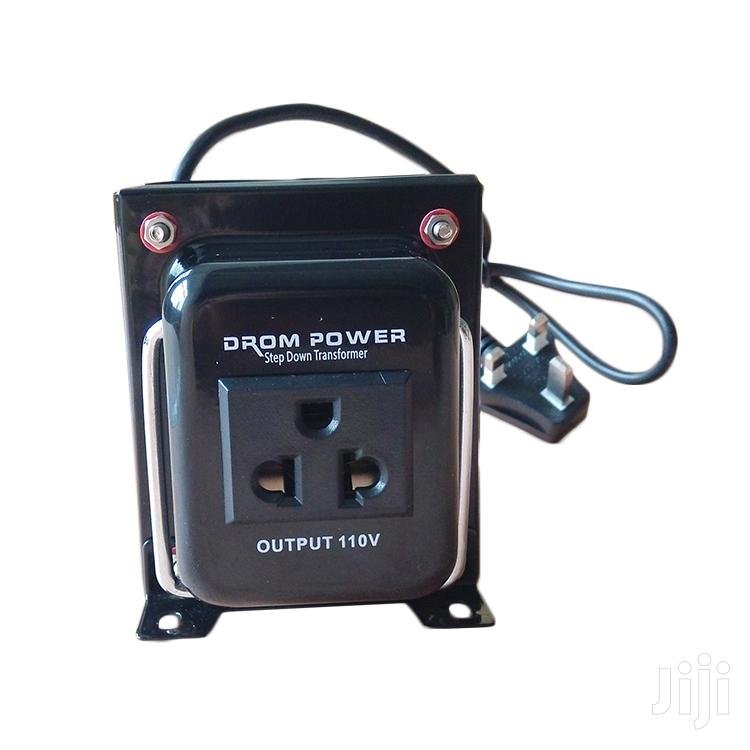Electrical and Power Tools
Step Down Transformer 220v to 110v Price in Kenya
Step Down Transformer 220v to 110v Price in Kenya
- What is a transformer and where is it used in Kenya?
- How can I select the best step down transformer for my application in Kenya?
- How to determine transformer requirements in Kenya
What is a transformer? where and why is it used?
Click to Buy Step-Down Transformers
A transformer is a piece of static electrical equipment that uses electromagnetic induction to convert electricity from one voltage system to another. All transformers, at their most basic level, are made up of a metallic coil that carries the electric current and a ferrous core that generates the magnetic field. The purpose of utilizing a transformer is to match the voltage of the load to the utility’s line voltage. The dry type, air-cooled transformers contain no volatile or inflammable ingredients and are merely cooled by the natural flow of air over their coils and heat radiation through their enclosure. As a result, it can be placed right next to the load and does not require a separate vault.
How can I select the best transformer for my equipment?
How to determine transformer requirement
Step 1: Determine the Voltage, Amperes, or wattage required by the load
Determine the load’s KVA, Amperes, or Wattage requirements. The load’s KVA determines the transformer size. Make sure to include the total number of pieces of equipment in your calculations. For single-phase or three-phase installations, the following formulas can be used to compute the KVA, (VA), or Amperes required:
| Single-phase | KVA | = | Volts x Amps |
| (VA) | 1000 | ||
| AMPS | = | KVA(VA) x 1000 | |
| Volts | |||
| Three-phase | KVA | = | 1.73 x Volts x Amps |
| (VA) | 1000 | ||
| AMPS | = | KVA(VA) x 1000 | |
| 1.73 x Volts |
Step 2: Determine the voltage of the power supply.
Step 3: Determine the load’s voltage requirements.
Step 4: What is the supply source’s frequency?
Step 5: Calculate the capacity of the transformer
- Is electrical isolation from the supply required for your equipment, or will a non-isolated autotransformer suffice?
- If fusing is intended for control transformers, a terminal block model is required.
- A finger-safe model option may be necessary if a control transformer is to be exported.
- The placement of the transformer will determine whether you need an open-type enclosure, an indoor ventilated enclosure, or one of the different types of enclosures that protect the windings from moisture, particulates, dust, or contaminants.
Step Down 220v to 110v Transformer Price in Kenya
- 50 Watts – KSh. 2200
- 100 Watts – Ksh. 2400
- 150 Watts – KSh. 2500
- 200 Watts – KSh. 3800
- 300 Watts – KSh. 4800
- 500 Watts – KSh. 5500
- 750 Watts – KSh. 5900
- 1,000 Watts – KSh. 9500
- 1,500 Watts – KSh. 10,300
- 2,000 Watts– KSh. 14000
- 3,000 Watts – KSh. 18,000
- 5,000 Watts – Ksh. 36,000
- 7,000 Watts – Ksh 38,000
- 10000 Watts – Ksh. 50,000
- 15000 Watts – KSh 60,000
Where can I buy Step Down Transformers in Kenya?
Buy step-down transformers from Rapidtech Digital Solutions at the best Transformer Prices in Kenya. If you need technical help in choosing the right model? Contact us today for help and advisory.
You can also check:
Step-Down Transformer Buying Guide in Kenya



Comments are closed.